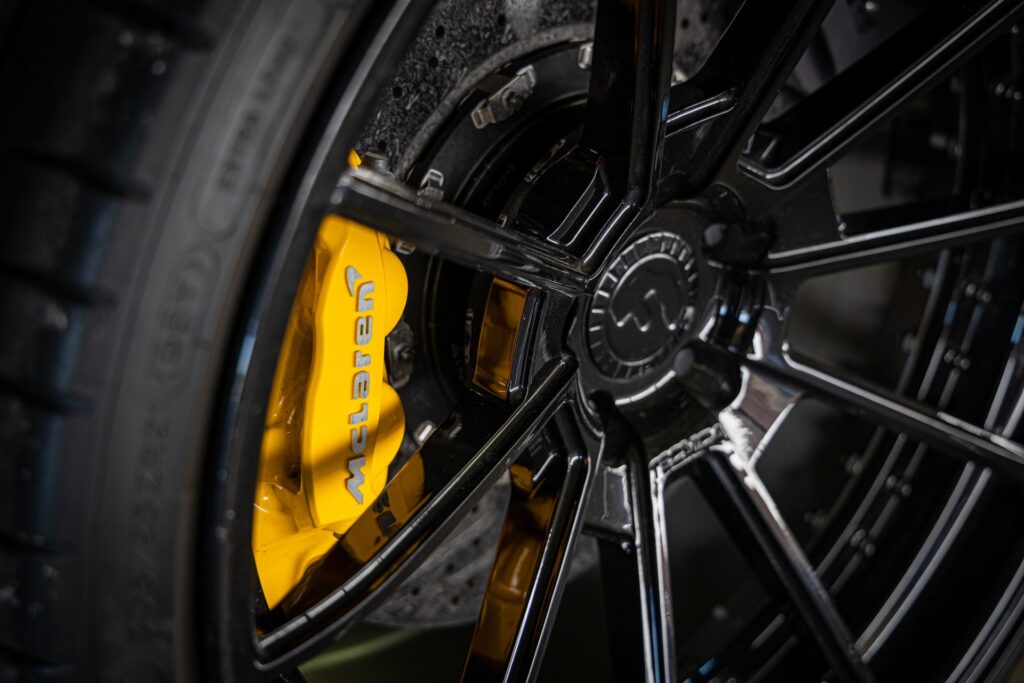ABS Brakes: What Do They Do?
Mar 25, 2019

As an Amazon Associate, Modded gets commissions for purchases made through links in this post.
Trying to stop your car when you don’t have a lot of traction is not easy. It’s very dangerous a nerve-racking. If you’re on a slippery or icy road and need to stop suddenly, you could be in danger if your car doesn’t stop or if it starts to slide all over the place.
This is where the ABS comes in. ABS stands for the anti-lock braking system, and it is designed to help your car stop when it doesn’t have good traction.
In the past not all cars had ABS, but it quickly became the standard because of the amazing safety benefits. In this article, we will cover everything you need to know about ABS brakes.
ABS Main Components
ABS has four components that make it function properly. Those components are speed sensors, valves, the pump, and the controller.
A Speed Sensor
This makes sure each wheel is turning at the speed it should and makes sure no individual wheel is spinning faster than the others. Meaning the driver need not worry about certain wheels acting independently of the rest.
An Electronic Control Unit
The ECU is responsible for adjusting wheel rotation and acceleration based on the signals it gets from the speed sensors, it also makes sure the brakes are working proportionally to what may be necessary.
A Hydraulic Control Unit
The HCU receives signals from the ECU to regulate when and how the brakes are applied and released. It does so by applying hydraulic pressure to either force or release brake power.
Various Valves
These are controlled by the ECU and HCU to release or apply each individual brake as dictated. These open and close to release pressure periodically, allowing the car to come to a controlled stop as directed by the driver.
Types of ABS Brakes
| Sensor on all wheels | Sensor on front wheels | Sensor on rear wheels | |
| Four-sensor ABS | Yes | Yes | Yes |
| Three-sensor ABS | No | Yes | Yes – only 1 |
| One-sensor ABS | No | No | Yes – only 1 |
There are different types of ABS brakes, four-sensor ABS, three-sensor ABS, or one-sensor ABS. A four-sensor ABS has sensors on all four tires and monitors each one separately.
A three-sensor ABS has sensors on both front tires and one sensor for both back tires. And finally, a one-sensor ABS has only one sensor to monitor both of the rear wheels.

How Do ABS Brakes Work?
The ABS, designed to help you get better control over your, is an important function. This allows you to prevent your car from sliding and running off the road or into other cars.
The sliding is caused when the tire’s contact patch is sliding relative to the road and therefore doesn’t have a good grip on the road. If you’re driving over ice and don’t have traction, your wheels will spin but you won’t go anywhere. The ABS helps bring the speed of the tire back down so that it can get better traction.
The ABS is constantly monitoring the car wheels and speed sensors. When it detects that the wheels are about to lock up, it can detect rapid decelerations in the wheel which are not normal. After it senses this, it will communicate with the valves to release the pressure to the brake until it starts to detect acceleration again.
Once it notices the acceleration happening, it tells the pump to increase the pressure in the brakes again. All of this happens very quickly, even before a change in tire speed is noticed. All of this helps your car brake more efficiently on slippery surfaces.
Engaging the ABS causes a pulsing sensation to occur. This is because the valves are opening and closing very quickly. This happens much faster than you would be able to pump the brakes yourself and it’s why ABS brakes are so efficient.
What Should I Do When The ABS Takes Over?
Many people wonder what they should do when the ABS takes over. Because the ABS works automatically, you don’t need to do anything to engage the system.
Also, many people wonder if they should pump the brakes while ABS is active. The answer is no when the ABS is engaged, simply hold down the brake pedal and let the ABS perform its function.
Then you can let off the brake when you regain control over the car. If for some reason there is an issue with the ABS, your check engine light will come on. Then you can use ABS scanners to read the error message and find out what’s going on.
Conclusion
ABS brakes are very efficient at helping you regain control of your car after your wheels start to lose traction. There are many situations that would be very dangerous if it weren’t for ABS. Now you know more about how ABS brakes work, what they do and how to operate them.
Author Bio
I’m Tim Miller, an automotive mechanic and blogger from Denver, Colorado. I’m the founder of obdadvisor.com, an automotive blog about OBD2 scan tools. My fanpage is facebook.com/autozikcom. I’ve had over 10 years experience in auto repair and using OBD scanners. Some of my review articles about car diagnostic tools can be found on my own website obdadvisor.com.





